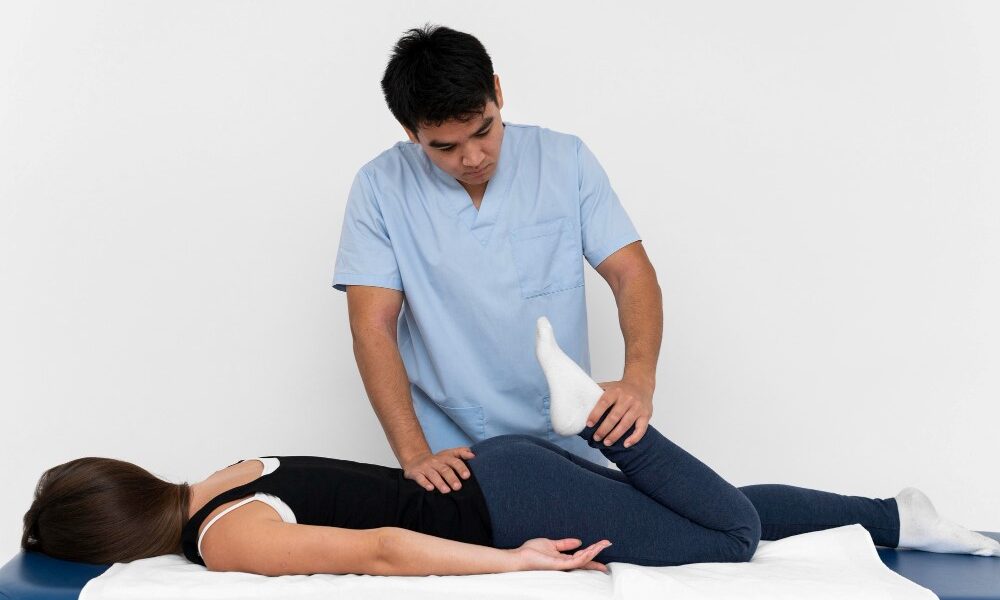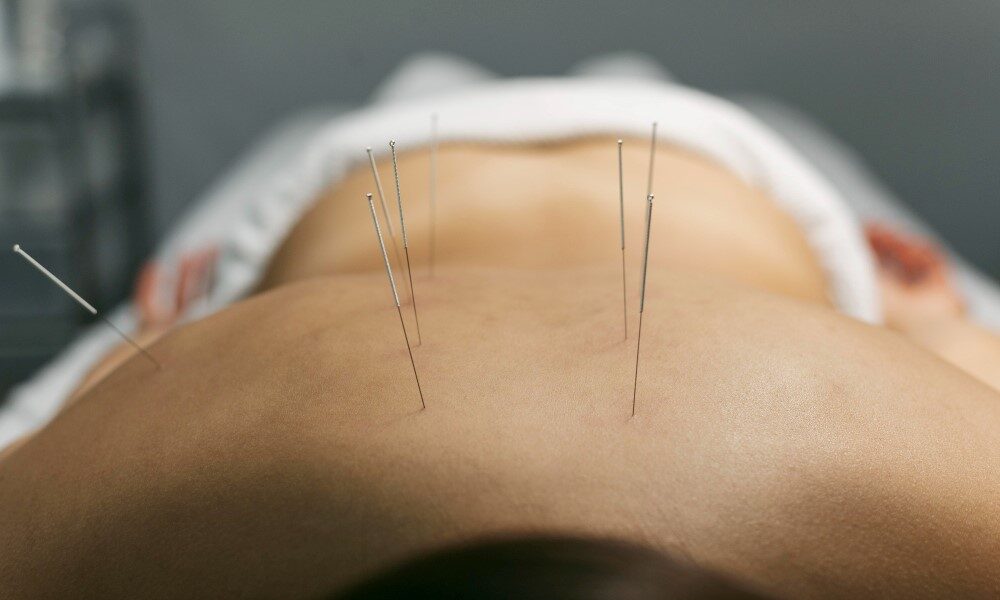Acupuncture & Physiotherapy
Acupuncture
Acupuncture is an ancient Chinese therapy more than 2500 years old which involves the insertion of very thin needles through your skin at strategic points on your body. A key component of traditional Chinese medicine, acupuncture is most used to treat pain in Orthopaedic disorders like Slip disc, Spondylosis, frozen shoulder, etc. Increasingly, it is being used for overall wellness, including stress management, Respiratory disorders – like Asthma, Gynaec – like Infertility, Neurology – Like Paralysis, Facial Palsy.
Traditional Chinese medicine explains acupuncture as a technique for balancing the flow of energy or life force — known as chi or qi (Chee) — believed to flow through pathways (meridians) in your body. By inserting needles into specific points along these meridians, acupuncture practitioners believe that your energy flow will re-balance.
Risks
The risks of acupuncture are low if you have a competent, certified acupuncture practitioner using sterile needles. Common side effects include soreness and minor bleeding or bruising where the needles were inserted. Single-use, disposable needles are now the practice standard, so the risk of infection is minimal. Not everyone is a good candidate for acupuncture.
Before having acupuncture treatment, be sure to tell the practitioner if you:
-
Have a bleeding disorder.
Your chances of bleeding or bruising from the needles may be increased if you have a bleeding disorder or if you’re taking blood thinners.
-
Have a pacemaker
Acupuncture that involves applying mild electrical pulses to the needles may potentially interfere with a pacemaker’s operation.
-
Are pregnant
Some acupuncture points are thought to stimulate labour, which could result in a premature delivery.
Physiotherapy
What is Physiotherapy?
Physiotherapy helps to restore mobility and normalcy in a patient’s life after he/she is affected by an injury, disease, or disability. Components of a physiotherapy session include manual therapy, advising and educating the patient. Physiotherapy can help a patient of any age to manage further pain and prevent subsequent injuries or diseases. In a nutshell, physiotherapy helps a patient improve and maximize his/her physical strength, functioning and general well-being while taking care of the underlying issues.
What are the types of physiotherapy treatments?

Physiotherapy types:
-
Neurological
This therapy is given when there is a loss of balance and coordination and balance, extreme weakness of the muscles, loss of function, muscle spasms, and if there is a decrease in sensation. The main aim of the neurological physiotherapy is to establish mobility of the body part and to treat the functional disorders of the body which has occurred due to the nervous system disorder like stroke, brain injuries, spinal cord injuries, Parkinson’s, etc.
-
Orthopaedic
The main aim of this therapy is to treat the diseases related to the musculoskeletal system, including correcting the muscles, bones, ligaments, joints, tendons. Through this therapy, pain is alleviated, increasing the mobilization, and for rectifying any skeletal injury.
-
Cardiopulmonary
This therapy is given to the person who has suffered any cardiopulmonary disorders like chronic obstructive pulmonary disease and cardiac arrest. The main aim of this kind of physiotherapy is to tell or educate patients about exercise and techniques through which they can improve the quality of their life.
-
Paediatric
This is a kind of physiotherapy which is done to improve the acute injuries which are found in children in the time of birth which involves certain genetic defects or delay in physical growth. In the physiotherapy, there are various exercises which are done strengthening the affected part of the body and to improve the movement of the body parts.
-
Geriatric
In this kind of physiotherapy age-related matters are treated like osteoporosis, arthritis. In these certain movements of the body restricted to avoid the pain but on the other hand, patients are given aids and exercises improve the overall mobility of the body.
-
Vestibular Rehabilitation
The focus of this vestibular therapy is to bring back the balance of the body which is caused by a problem in the inner ear which destroys the balance and gives the sensation of vertigo and chronic dizziness. This therapy teaches the body to gain back the balance and the muscles to become more studier.
How is physiotherapy done?
A physiotherapist may employ a variety of techniques, determined by the nature of the injury sustained and the problem that is being treated. The commonest of them are:
-
Manual manipulation
Moving the soft tissues and the joints better circulation, flushes excess fluids from the body and relaxes overly tight muscles and spasms.
-
Electrical stimulation of the nerves
Delivering electric currents in controlled intensity to the affected part helps to contain the pain signals, thus preventing them from reaching the brain.
-
Acupuncture
This is a great way of stimulating the CNS while dulling the pain and relaxing tight muscles.
-
Demonstration
Teaching and demonstrating proper movement patterns to the patient help them to recuperate on their own.

